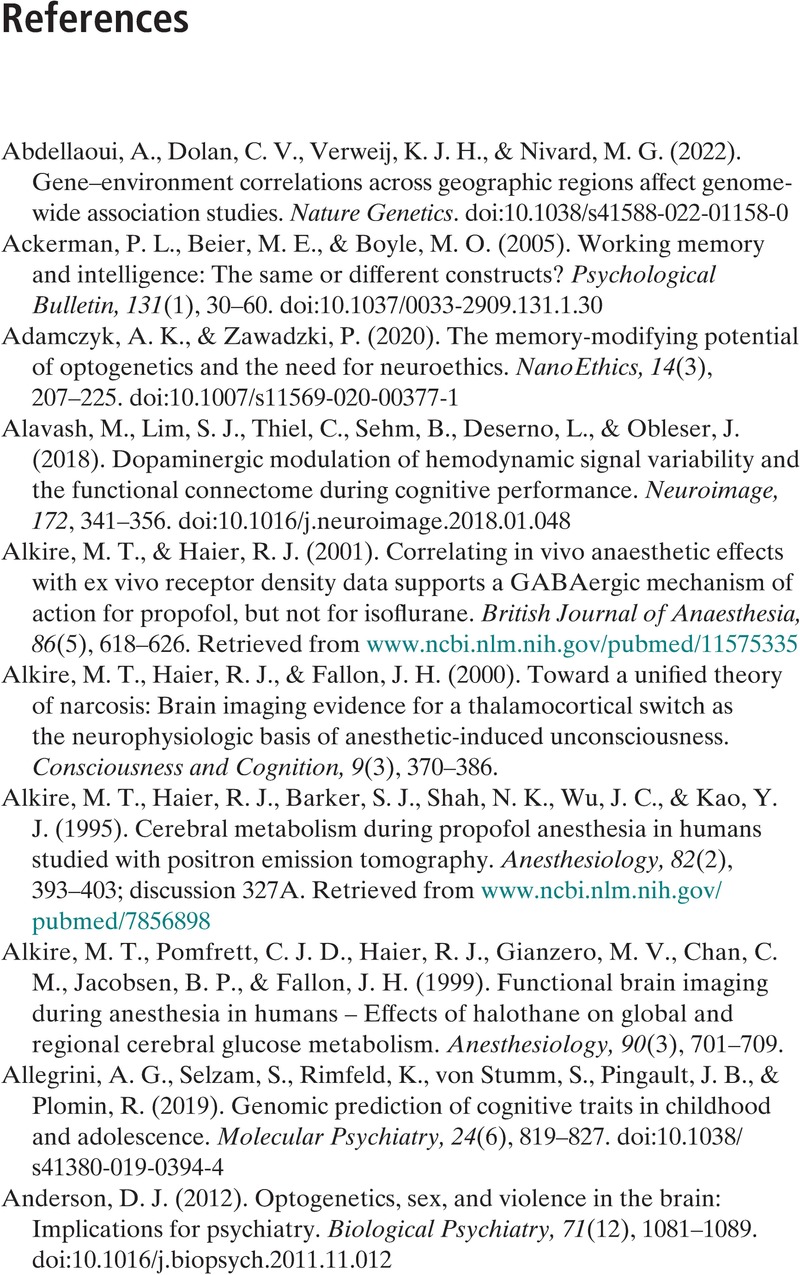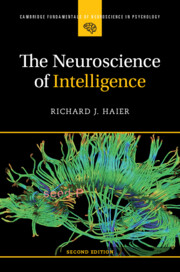Book contents
- The Neuroscience of Intelligence
- Cambridge Fundamentals of Neuroscience in Psychology
- The Neuroscience of Intelligence
- Copyright page
- Dedication
- Reviews
- Contents
- Preface to the First Edition
- Preface to the Second Edition
- Acknowledgments (First Edition)
- Acknowledgments (Second Edition)
- Chapter One What We Know about Intelligence from the Weight of Studies
- Chapter Two Nature More than Nurture
- Chapter Three Peeking Inside the Living Brain
- Chapter Four 50 Shades of Gray Matter
- Chapter Five The Holy Grail
- Chapter Six As Neuroscience Advances, What’s Next for Intelligence Research?
- Glossary
- References
- Index
- References
References
Published online by Cambridge University Press: 13 July 2023
- The Neuroscience of Intelligence
- Cambridge Fundamentals of Neuroscience in Psychology
- The Neuroscience of Intelligence
- Copyright page
- Dedication
- Reviews
- Contents
- Preface to the First Edition
- Preface to the Second Edition
- Acknowledgments (First Edition)
- Acknowledgments (Second Edition)
- Chapter One What We Know about Intelligence from the Weight of Studies
- Chapter Two Nature More than Nurture
- Chapter Three Peeking Inside the Living Brain
- Chapter Four 50 Shades of Gray Matter
- Chapter Five The Holy Grail
- Chapter Six As Neuroscience Advances, What’s Next for Intelligence Research?
- Glossary
- References
- Index
- References
Summary

- Type
- Chapter
- Information
- The Neuroscience of Intelligence , pp. 234 - 286Publisher: Cambridge University PressPrint publication year: 2023



